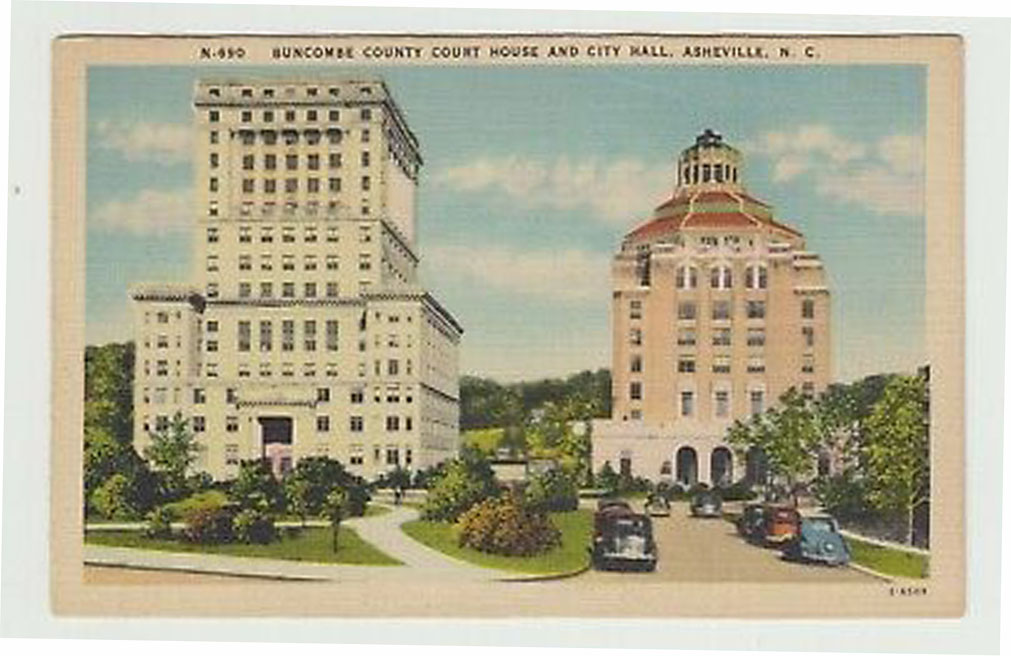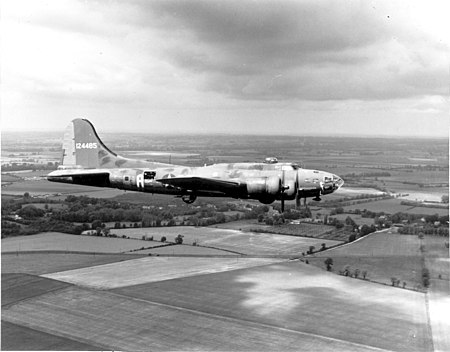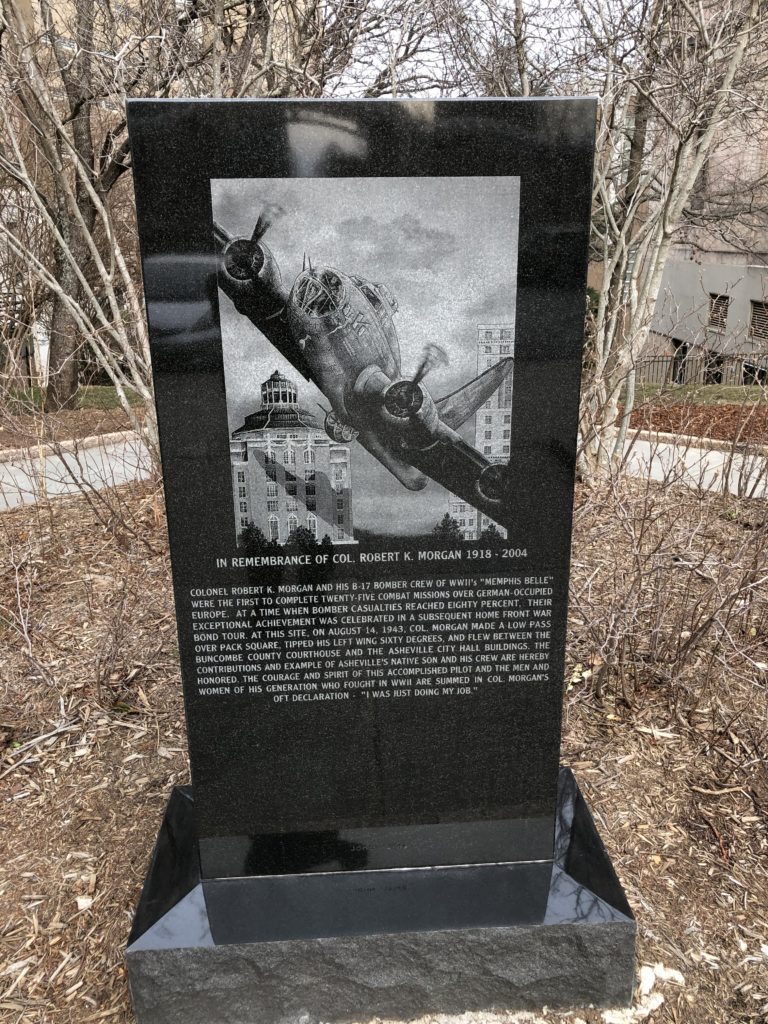The sun was hot on the back of her hands as Betsy Teague pushed her 9-month-old daughter in a pram in the city square by the Vance Monument. A wide brimmed hat kept her face shaded in the midsummer heat. Her 6-year-old son Paul was beside her, hoping for a hot dog from a vendor on the other side of the monument.
There was a war going on in Europe and in the Pacific, but the last thing she expected to see was a B-17 bomber flying low toward City Hall and the County Courthouse, passing between them with the right wing up and the left wing down, banking a turn to the left. She stopped in her tracks, her mouth gaping.

Moments before, two men inside City Hall were talking. “Are you saying you didn’t go to see it?” Lt. Col. Joe Miller asked. “The Memphis Belle, the most famous airplane in the country? And the crew?” He was wearing the summer uniform, khaki short sleeves for the hot weather, with his rank insignia on the shoulders. Windows were open and fans moved the air through the office.
Lt. Col. Alfred Richards, dressed the same way, tossed his hand up dismissively. “The Memphis Belle! I’ve heard so much about it, I don’t need to see it. Bullet holes, ruined engines. I’ve seen my share.” He added, “The pilot, this fellow Morgan, you’re both from here, aren’t you?”
“I’m from Waynesville; Morgan is from Asheville.” Lt. Col. Miller smiled. “I was also his flight instructor. He was my student, along with a thousand other pilots. I was lucky to get picked for this tour with Morgan and the crew. I haven’t been back to Asheville for almost twenty years. I took my first airplane ride here in a surplus biplane from the last war. My father and I stayed in a little inn on Biltmore Ave; I just walked past there coming to see you. It’s a good memory.”
Lt. Col. Miller and Lt. Col. Richards were in the City Hall building that was next door to the Buncombe County Courthouse. There was very little space separating the two buildings. Richards was in command of the Weather Wing Unit of the Army Air Force. His office faced the space between the two buildings.
Miller asked, “Did you miss the reception with Major Morgan and the crew? They’re promoting war bonds all over the country, you know. Doing a fine job of it. The whole crew is flying out right about now. I’ll be following them tonight to Columbus, Ohio, with three more stops after that. Then the tour will be over.”
“I heard the Memphis Belle went to Memphis, naturally,” Richards replied, somewhat contemptuously. “I suppose you get a hero’s welcome and parades everywhere you go. Does this Morgan fellow think highly of himself, then?”
Miller turned away, wishing himself in the air already, instead of talking to this officer with the pinched face. “I look for that in a pilot, you know. When you’re flying over enemy territory and being shot at from above and below, it’s good to have steady faith in yourself. Or in God, or something, even if it’s a girl back home in Memphis.” He thought of the ones that didn’t come back. The survival rate for pilots was around twenty percent. “Morgan is a crackerjack pilot and a very reliable man, even tempered and steady as can be. I think of him flying home over the English Channel with one wing nearly blown off, flapping in the wind, losing altitude the whole way.”
Richards seemed to lose interest, wanting to get back to the neat pile of papers on his desk. Miller wondered if the man, like himself, had never been to war, senior officers already when Japan attacked Pearl Harbor and then Germany declared war. Richards may have been sidelined to a desk job, stateside, just as Miller was given the job of training new pilots.
Suddenly, they noticed the distinctive roar of a large airplane in the distance. They turned to the open windows. Both men recognized the sound as it grew louder. “That must be the Memphis Belle flying over the city,” Miller said. “Morgan must be looking at his hometown one more time, saying ‘Goodbye, for now.’”
The sound grew louder and louder, building from four massive engines on the huge bomber, an ascending noise that was soon loud enough to drown conversation. “Good Lord,” Miller shouted. “He’s going to buzz the building.” He looked at Richards, who was staring out the window, frozen in shock.
In a flash and shadow, an enormous wing streaked past the window, tilted down between the buildings, almost brushing against the glass, and was gone in an instant, up and away over the mountain to the east. The shock wave rattled the glass and blew papers in swirls all over the office. The noise was deafening; the building trembled beneath the force of the plane’s engines and the sudden rush of wind.
The startled office staff shouted and grabbed at papers, except for Mildred, who looked up but finished typing a sentence with a period at the end.
Miller had that unnerving sense of chaos and danger in the moment. It was over in a second. He laughed as adrenalin started to release into his blood. He looked at Richards, whose face was turning purple like a turnip. “Morgan!” He laughed and then howled it again, “Morgan!”
Richards came back to life, his eyes bulging, spitting obscenities. “What the hell! A blatant violation. He could have killed us all. That pilot’s dangerous! I’ll have him in the brig. I’ll have him drummed out of the service. You saw what he did; it’s against all the rules, what he just did.” He was furious in a direct way that military men can be angry at incompetence. He reached for the telephone, his hand shaking. “Get me Washington, right now!” he bellowed to his secretary.
“Well, he didn’t hit anything. He must have practiced that trick in France.” Miller grinned widely. His hands were replaying the airplane banking between the buildings. “I didn’t teach it to him. I’ll be damned! That was some fancy flying.”
Out the window, he could see a young woman in a floppy hat with a stroller and a young boy alongside. She was holding her hat on her head with one hand, pointing north in the direction of the bomber climbing over Sunset Mountain with the other hand. The boy was pointing too, very excited. The hot dog he’d been hoping for was long forgotten.

========================{}=========================
The Memphis Belle was on a 31-city tour of the USA, as a reward for completing 25 missions against Germany. The plane was later celebrated in books and movies. It is on display at the National Museum of the United States Air Force at Wright-Patterson Air Force Base in Dayton, Ohio
War censorship was strict, but it’s still a surprise that this event was not reported in the Asheville Citizen Times. The war department is silent on the subject. Here’s what Robert Morgan says in his book “The Man Who Flew the Memphis Belle”:
“On our final night in Asheville, the city fathers had a party and reception for us at the City Hall auditorium. Each crew member spoke. When my turn came, I guess I was still in a sentimental mood. I found myself reminiscing about that good old mountain moonshine that was made up in the Smoky Mountains above Asheville. It was awful good, I told the folks, to get back to town here and have a taste of that real homemade whiskey. Then I made a promise. ‘After the war, I think I will still be flying, and I will see that this moonshine gets flown around all over the United States so that people will realize what good moonshine we make in our mountains.’ I think the crew was looking at me a little sidewise by this time, but the homefolks loved it, and it brought a big laugh. I still hear about that speech to this day, from people who were at that meeting. I think some of them are still waiting for me to make good on my promise.
“Taking off from the Asheville airport the next day, after a special good-bye to Dorothy Johnson, I found myself once again in the grip of my favorite vice. It was a gorgeous Southern day, not a cloud in the sky, and I turned to Verinis (copilot) and said, ‘Jim, I think we’ll just drive up over the city and give them a little good-bye salute.’ Verinis knew what was coming, but other than roll his eyes a little, he said nothing. And so sure enough, we took off to the north and then turned east up over Patton Avenue. Down ahead of us, on a square at the crest of a gradual rise in the center of town, City Hall and the Courthouse stood, separated from one another by not a whole lot of space at all. ‘Oh boy,’ I said to myself, as Verinis fixed me with a Surely-you’re-not-going-to-try-this look. ‘Should I go between those buildings?’ Yes, my self answered. I think you should. I figured that a sixty degree bank would squeeze us through all right. And so, heading east, I banked the plane and put the left wing right down between the Courthouse and City Hall. It was kind of a tight fit, but we made it. Then I turned the Memphis Belle left and pulled her up over Sunset Mountain, and we were out of town.
“Out of town but not out of trouble, just yet, anyway. It happened that City Hall, at that time, housed the office of the Weather Wing Unit of the Army Air Forces. The Lieutenant Colonel in command of that unit happened to be looking out the window as the Belle slanted past— maybe the roar of our engines had aroused his curiosity. He was one of those spit-and-polish Lieutenant Colonels and before we had even reached our cruising altitude he was on the telephone to the Pentagon, sput-sputtering about how Morgan had damn near taken half of greater municipal Asheville with him on leaving the town. As I understand it, the reply he got thoughtfully addressed all his concerns. ‘Major Morgan,’ the Pentagon officer replied, ‘has been given permission to buzz by Lieutenant General Henry Arnold.’ The Lieutenant Colonel was not heard from on the subject again.”
========================{}=========================
The first part of this story is fiction. The second part is fact.
https://en.wikipedia.org/wiki/Memphis_Belle_%28aircraft%29
- Memphis Belle: A Story of a Flying Fortress, a 1944 documentary film about the real aircraft and crew on its final mission
- Memphis Belle (film), a 1990 fictional film inspired by the 1944 documentary.

This monument is placed between Asheville’s City Hall and the Buncombe County Courthouse at the site where Robert Morgan flew the Memphis Belle B-17 bomber between the buildings while on a promotional tour for war bonds in 1943.
